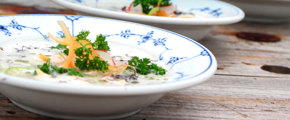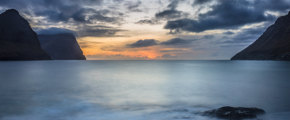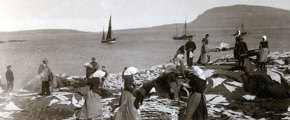Atlantic halibut
The Atlantic halibut is the largest of all flounders and can grow up to several meters long. The cold waters of the North Atlantic make the Atlantic halibut grow slowly and develop a deliciously dense meat. Its mild and sweet taste and firm juicy texture stands well on its own but also carries stronger flavours well.
The Atlantic halibut has firm and dense meat with a tender and flaky texture. Its mild sweet taste has a somewhat buttery flavour.
The Atlantic halibut is almost identical to other species of halibut when it comes to cooking, but it does have some slight differences. For example, compared to the Pacific halibut, the Atlantic halibut has a slightly stronger taste and its meat is a little fattier and juicier than that of the Greenland halibut.
Despite the higher fat content, one should still be careful not to overcook Atlantic halibut. Using high temperatures, keeping the skin on or adding moisture throughout the process (brining), can help ensure that the fish keeps its moisture when cooked.
The Atlantic halibut is very versatile and can be prepared in many ways. Its sweet buttery taste is excellent all on its own.
As the taste is not easily overpowered, it is also quite delicious paired with fuller and more dominant flavours. In the Faroe Islands halibut is often used in creamy fish salads.
In Faroese the halibut is called kalvi. Kalvasalat (halibut salad), halibut mixed with mayonnaise, sour cream and mustard served on bread, is a popular traditional dish in the Faroe Islands.
Atlantic halibut is rich in protein, vitamin D, vitamin B12 and selenium.
Biology
In Faroese halibut is called Kalvi. Atlantic halibut is also called white halibut. The Atlantic halibut (Hippoglossis hippoglossus) is a right-eyed flounder flattened sideways, which habitually lies on the left side of its body with both eyes migrating to the right side of its head during development.
It is ademersal fish living on or near sand, gravel or clay on the sea floor. It is a benthic fish, denser than water, so the halibut can rest on the seabed camouflaging itself and lying in wait to ambush prey or roaming over the sea floor in search of food.
The Atlantic halibut is more diamond shaped than its Greenland counterpart. It has a long dorsal fin and posterior fin that covers nearly its entire circumference. The Atlantic halibut ismost often very dark in colour – black or charcoal – with lighter spots all over. Its stomach is milky white with some greyish spots as well.
The length of the Atlantic halibut varies a lot and its growth rate is very slow. It can grow up to 365 cm long, but mostly ranges between 50 and 200 cm. The roe fish is often larger than the milter.
The Atlantic halibut will eat whatever is readily available, but mostly preys on other fish, including cod, haddock and herring, to name a few. Younger Atlantic halibut mostly eat cephalopods, prawns and larger crustaceans.
In the waters around the Faroe Islands, Atlantic halibut can be found from the shallows along the shoreline to depths of over 1000 meters far out to sea.
They mostly keep to shores when they are young and venture further out as they mature. Once sexually mature, they will return to the shallows to spawn, usually during the spring. The viable eggs and larvae will float close to the surface. Once they are a few months old, they will settle on the seabed, often staying immobile for long stretches of time.
The Atlantic halibut can live for more than 50 years old. The male is sexually mature at 8 years and the female at around 10.
The Atlantic halibut lives all across the North Atlantic. The Faroese fish for Atlantic halibut almost exclusively in the waters of the Faroe Islands. Faroese vessels mostly use trawls and longline to fish for Atlantic halibut.




